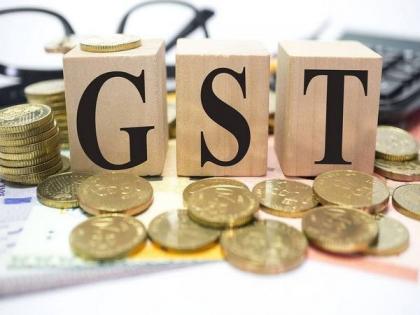Food-processing sector a major beneficiary of GST cuts, solving classification issues
By ANI | Updated: September 8, 2025 14:25 IST2025-09-08T14:24:42+5:302025-09-08T14:25:04+5:30
New Delhi [India], September 8 : The food-processing sector has been a major beneficiary of the recently announced rationalisation ...

Food-processing sector a major beneficiary of GST cuts, solving classification issues
New Delhi [India], September 8 : The food-processing sector has been a major beneficiary of the recently announced rationalisation of GST rates, with most products witnessing a decline to a 5 per cent GST slab.
The rationalisation of GST to lower levels provides a variety of stimulants to the sector and encourages a virtuous cycle of economic growth.
On September 22, the first day of Navratri, all changes in GST rates will come into effect.
"The simplified tax structure brings uniformity across food items with reduced number of tax slabs. A stable tax environment will help businesses plan long-term investments, encourage compliance, and drive economic growth," according to a statement from Ministry of Food Processing Industries.
Consumers will witness overall reduced food prices, making staples more affordable.
"This in turn stimulates consumer demands, FMCG and packaged food businesses are expected to see an uptick in sales. Additionally, the simplification aids businesses by reducing compliance costs and lowering litigation risk," the ministry added.
The new structure helps correct inverted duty cases when inputs were taxed higher than finished products.
The recent GST reform provides immediate relief for strengthening the value chains in the food sector, improving liquidity especially for MSMEs, reduce working capital blockage and promote domestic value addition.
The new structure eliminates classification disputes arising from varying tax rates for similar products.
For example, packaged versus loose paneer or parathas previously had different rates, but now follow a clearer structure and greatly reduces classification disputes.
"GST rate cuts will result in lower retail prices, which in turn will increase demand for manufactured products including processed food products," the ministry further said. "With increased demand, expected rise in investment and formalisation of industry, more employments opportunities are expected to be generated in the sector and economy as whole."
In a historic move to simplify the Goods and Services Tax(GST), GST Council in its 56th meeting has reduced the GST structure from four slabs (5%, 12%, 18%, 28%) to two main rates5% (merit rate) and 18% (standard rate) along with a 40% special rate for sin/luxury goods. These changes come into effect from September 22, 2025.
Sweeping changes have been made to what the government termed the next-generation GST (Goods and Services Tax) rationalisation.
It came on September 3, just days after Prime Minister Narendra Modi announced it from the ramparts of the Red Fort on Independence Day. This is aimed at reducing the tax burden on citizens while stimulating economic growth.
Disclaimer: This post has been auto-published from an agency feed without any modifications to the text and has not been reviewed by an editor
Open in app
